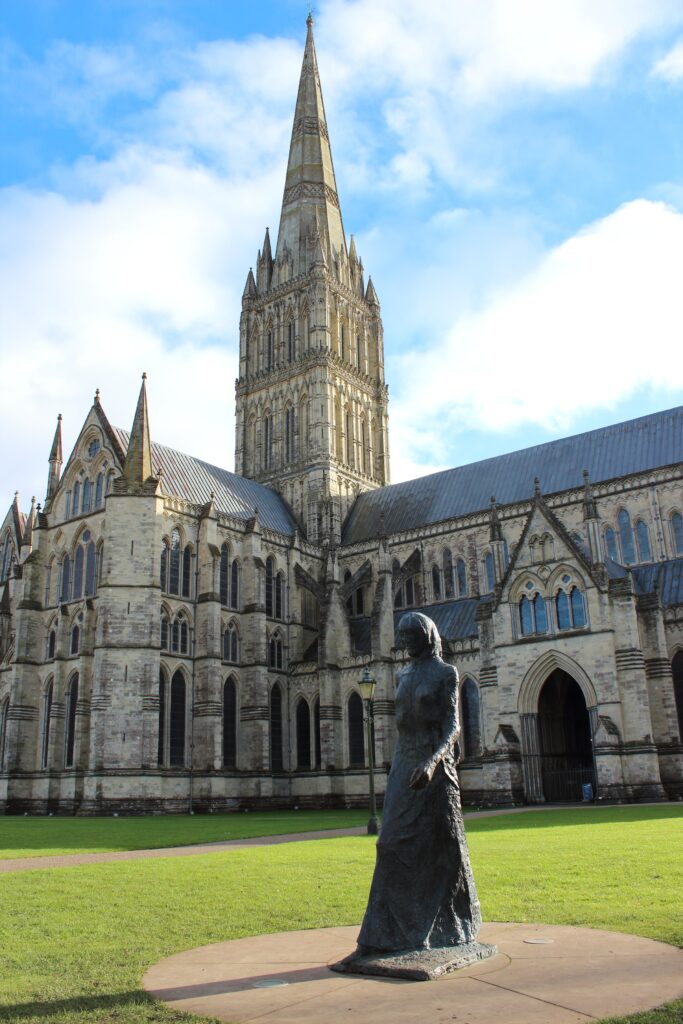After moving from North Wales to Warwickshire so began a process of exploration of the surrounding counties. This tended to be undertaken without the immediate access to all manner of information about intended destinations as is now available. This made travel then more of an unfolding experience than one of matching experience to expectation. It seemed much easier then to set off promptly on the day and after some hours on the road south – with consultation of a road atlas – we arrived in Salisbury with ample time to take in the sights. A key attraction had, of course, been the cathedral. The land around the cathedral appeared remarkably open, unlike in other cathedral towns such as Lincoln where there is close building all around such major structures. This was St Andrew’s Cathedral where its construction had commenced in 1357 and essentially completed in 1445. It was approached along a line of almshouses dating from 1566.
The fact that the cathedral housed an original copy of the famous Magna Carta was an intriguing surprise. The document had emerged from the most turbulent of times of the emergent English nation and had marked an effort to instill the rule of law as the highest form of jurisdiction rather than the whim of its royal ruler. It transpires that the text is as easy to read today as it was the day it was written. This is apparently on account of the use of black pigments derived from oak gall apples, as commonly used during this period as an ingredient in ink. There are only four copies of Magna Carta that survive. Salisbury and Lincoln cathedral each possess one and there are two in the British Library in London. One copy now in London was damaged in a fire while retained in Ashburnham House in 1731 and has been been the focus of an extensive restoration processes.
A second item of some novelty was an archaic chiming clockwork mechanism without a clock face used to remind the cathedral community of times to attend prayers. This would have been an early forerunner of devices able to be recognised as clockwork timepieces. The mechanism is described as dating from 1385 although a minority of experts assign it a later date. Some theories speculate that such geared mechanisms found their way into Europe from the crusades when Arabic texts became available as translations of Ancient Greek works describing such mechanisms.

